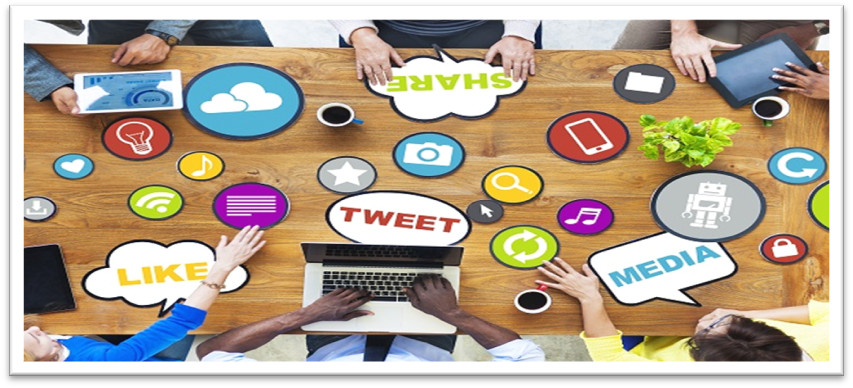

‘The Role of Media in Shaping Public perception of Crime and Criminals’.
MEDIA'S PORTRAYAL OF CRIME AND PUBLIC PERCEPTION TOWARD THE CRIMINAL JUSTICE SYSTEM.
Introduction:
Media attention and public sentiment on crime and the criminal justice system, both have been widely researched in the academic community. Because representations in the media of court systems have the power to change public perceptions of institutions, that have substantial relevance in terms of the practices used in crime control model. It has been shown in the majority of this study, which has used quantitative approaches, that attitudes and streaming media are correlated. Even if there has been a highly significant relationship, it has not been shown that it is the causation of any damage.
The challenges in establishing a causal relationship between media coverage of crime and public perceptions of the criminal justice system really shouldn't, dissuade us from pursuing our investigations. It is preferable to look for more comprehensive explanations for the formation of public opinion and the media's participation in it, rather than depending just on statistical data to guide our reasoning. Focus groups were employed in this study to learn how and how much individuals depend on the media when it comes to understanding crime and judging judicial systems.
MEDIA, CRIMINALITY, AND CRIMINAL JUSTICE: VIEWPOINTS
The concept of 'effects' is often debated in crime, criminal justice, and media literature, among other places. We may hypothesize that the most significant media impact is on attitudes about crime and the tradition of criminalizing behaviour. The media asserts that since the majority of media information is dominated by crime and immorality, it may foster deviant conduct among people.(Martin, 2018; Nix et al., 2021). Psychiatrist Fredric Wertham is most likely the one who first proposed the "direct effects" hypothesis.
MEDIA TRIALS; A BOON AND A THREAT
During the late twentieth and early twenty-first centuries, the expression "trial by media" was used to describe how television and newspapers could affect a person's reputation by generating a perception of guilty or innocent behaviour before, or after, a Court of law judgement. The media has presided over numerous trials in recent years and rendered a judgment before the results of a trial through a judicial has been decided by the court. In India, the press has no particular privileges.
However, for democracy to thrive, a free press is a political necessity. The prosecution and the accused both have the right to a fair trial in a criminal trial. Borders are sometimes crossed and rules are broken between free speech and a fair trial, resulting in severe effects for individuals and institutions. Fear of Media should not be allowed to interfere with a legally binding trial.
Digital violence is a breach of peace in and of itself. In a liberal and positive sense, the media is institutionalized anarchy. Whether the media trial should be considered a contempt of court case is a contentious issue that should be debated. To every coin, there is another side. Similar to media trials and journalism, in some instances, a journalist creates a pre-determined image of an accused, which can destroy his or her reputation and affect the trial and decision, thus causing media trials. It's becoming more and more common to see media trials in India. Several instances have occurred in which the media took action against an accused without regard to fair trials in court. It is very easy for the media to influence an individual's thought process.
Recent media trial involves the shocking case of late actor Sushant Singh Rajput, involving the investigation and alleged mishandling of his unnatural death. This case has enraged the country and much concern has been expressed. The media has told the whole story about the late actor's death in a way that has given the general public the impression that the person charged is guilty. As well as publishing information based on mere assumptions and suspicions, the media has been extremely aggressive about reporting on the topic on a daily basis, without verifying factual details based on the evidence.
Judges Dipankar Dutta and Girish S Kulkarni were hearing a PIL filed by eight former senior police officials from Maharashtra, activists, lawyers, and non-governmental organizations, seeking a restraining order against the Media Trial in Sushant Singh Rajput's death case. According to the court, "substantial damage has been caused to the reputations of the parties concerned" in this matter. Regardless of whether they are cleared of the allegations, they will have a stigma on their foreheads if they are not penalized.Nevertheless, the media's efforts to raise awareness and pressure were successful.
In Jessica Lal's case (Sidhartha Vashisht @ Manu Sharma vs. State (NCT of Delhi), it took seven years for the court to determine that the evidence did not suffice to convict the accused, a wealthy brat. It seemed as though the family of Jessica Lal had lost all hope. The media, on the other hand, took the initiative to seek justice for Jessica. The media continued right where the police left off. By instilling a sense of justice in the public, the media put pressure on the police, administration, and government to act quickly. He was ultimately sentenced to life in prison, the son of a high-profile politician.
Another high-profile case where the media should be credited is the Priyadarshini Matoo case (Santosh Kumar Singh vs. State thr. CBI). A 23-year-old law student from Delhi University was brutally murdered by Santosh Singh, the son of a high-ranking IPS officer. It appeared that Priyadarshini Matoo would never get justice when the court acquitted Santosh Singh after three years of court proceedings. Media investigations were conducted in order to uncover the shortcomings in the police investigation, which ultimately resulted in the CBI apprehending the perpetrators.
The free media, a symbol of democracy, represents a society with freedom of expression. It is the media's duty to speak out against injustice when people are in despair. Citizens are therefore in favour of unrestricted access to information. Because of the importance of the industry, a separate regulator that is an independent authority overseeing the industry is vital for media freedom. However, it must exercise caution in monitoring the media and ensuring that outlets do not exceed the limits it sets.
CONCLUSION
When it comes to censorship or punitive action against the media, the government must exercise caution, but the media should also refrain from committing unjustified violations. Throughout the investigation, trial, and sentencing stages, media trials can sabotage the administration of justice.
The conduct of judges may be criticized for judicial reasons or purely personal reasons. The danger is when criticism leveled against judges is unjustified or ill-informed, in that this could undermine public confidence in the judiciary.
Media outlets with free speech are the voice of the people and the reflection of society, and they are tasked with reporting what is happening in the world. Through media intervention, people have the right to express themselves on a freeway.
It is critical that any country's press be free from interference in the interest of freedom of the press, which is regarded as the mother of all liberties in a democratic society. Our Constitution guarantees journalistic freedom in Article 19(1)(a) because of this concern. The consequences and implications of unaccounted news articles are considerably more destructive, not only to the person's reputation but also to the court's verdict, when a government controls the media. Consequently, media trials have assisted many people in many cases, however, they would benefit from a restriction in terms of protecting people's privacy and preserving accuracy.

